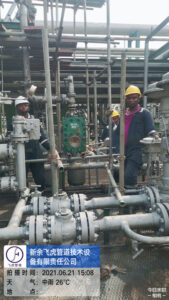Large-scale system implementations can transform businesses, but they also come with significant compliance challenges. Ensuring that every phase of the project meets regulatory and internal standards is critical to avoid costly penalties and operational disruptions. Innerworks International specializes in guiding organizations through these complex processes, ensuring compliance is maintained from start to finish. Understanding the stakes involved highlights why compliance should be a top priority in every system rollout.
Understanding Compliance Requirements
Compliance requirements vary by industry and region, encompassing regulations such as GDPR, HIPAA, SOX, and others. Innerworks International emphasizes the importance of early and thorough identification of all applicable regulatory frameworks to tailor implementation plans accordingly. Industry-specific standards must also be considered to align systems with legal and business expectations, preventing violations that could hinder project success.
Planning for Compliance in System Implementation
Successful compliance starts with planning. Innerworks International works with organizations to integrate compliance checkpoints into project roadmaps, ensuring no detail is overlooked. Collaboration among compliance officers, legal teams, IT departments, and project managers is critical for comprehensive risk assessment and mitigation. Innerworks International’s expertise helps organizations assign clear roles and responsibilities to keep compliance at the forefront throughout the project lifecycle.
Data Security and Privacy Considerations
Data protection is a cornerstone of compliance, especially when migrating and integrating sensitive information. Innerworks International advises on best practices like encryption, stringent access controls, and maintaining thorough audit trails to protect data integrity. Handling personal or sensitive data in compliance with privacy laws is essential to prevent breaches and build trust with stakeholders.
Documentation and Audit Trails
Maintaining accurate and detailed documentation of all compliance efforts is vital for internal reviews and regulatory audits. Innerworks International supports clients by implementing systems and tools to track compliance activities meticulously. Proper documentation demonstrates accountability and readiness for any external scrutiny, reducing risk and fostering transparency.
Training and Awareness
A culture of compliance depends on ongoing education. Innerworks International offers tailored training programs that equip teams with the knowledge and skills necessary to uphold compliance standards. Continuous communication and refresher sessions ensure that compliance policies remain top of mind throughout and beyond the implementation process.
Testing and Validation for Compliance
Before a system goes live, compliance testing must confirm that all controls and processes meet required standards. Innerworks International employs both manual reviews and automated monitoring tools to identify potential gaps early. This proactive approach allows organizations to address issues promptly, ensuring a smooth and compliant launch.
Post-Implementation Compliance Monitoring
Compliance is not a one-time effort. Innerworks International helps organizations establish ongoing audit schedules and review protocols to monitor compliance continuously. As regulations evolve, system updates are essential to remain aligned. Additionally, having a clear incident response plan prepared by Innerworks International ensures swift action if any compliance breaches occur.
Takeaway
Ensuring compliance during large-scale system implementations demands a proactive, well-coordinated approach. Innerworks International provides the expertise and tools to manage compliance effectively, minimizing risks and maximizing operational integrity. Prioritizing compliance safeguards your organization’s future while enabling smoother transitions to new systems.








